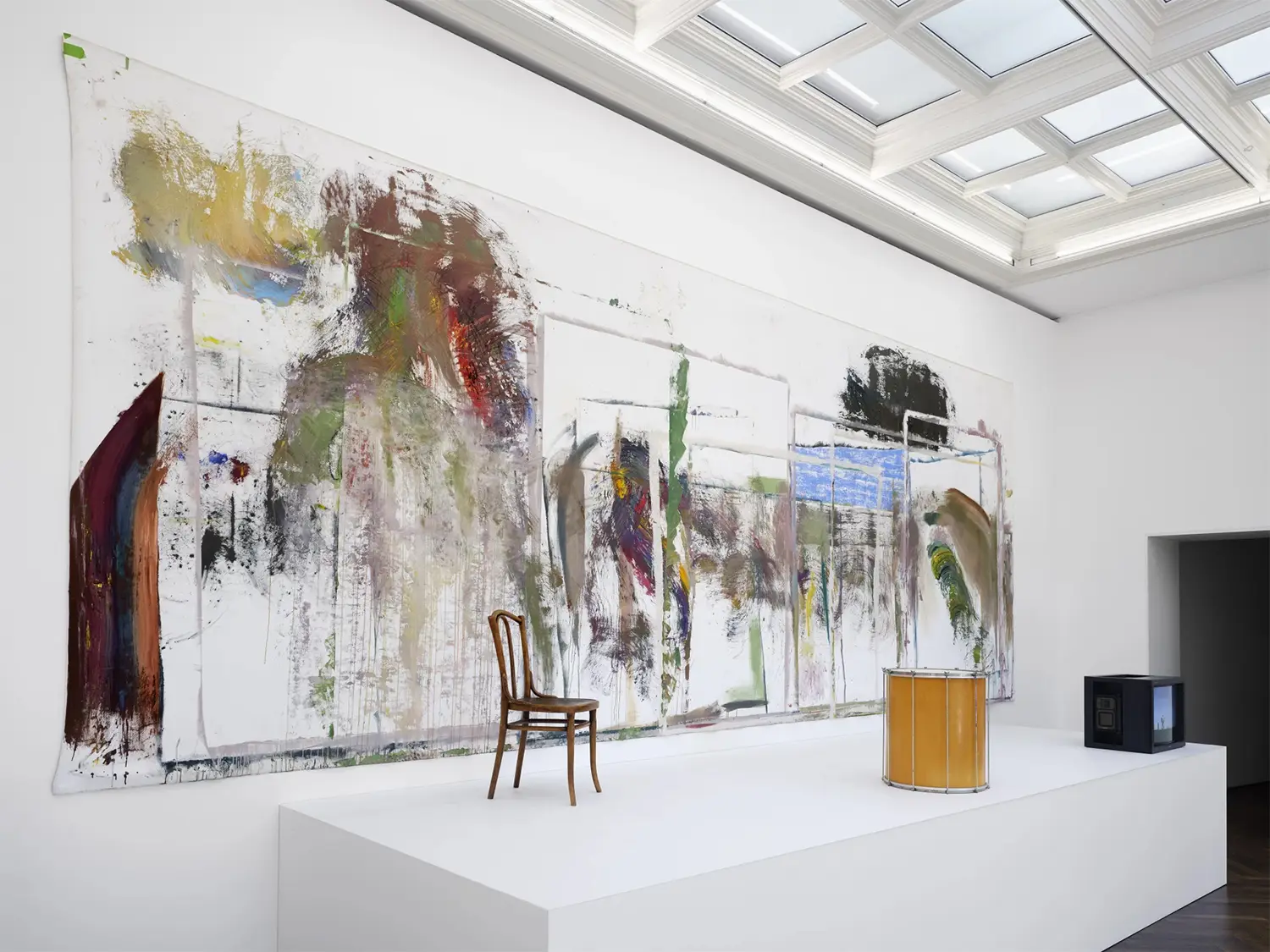
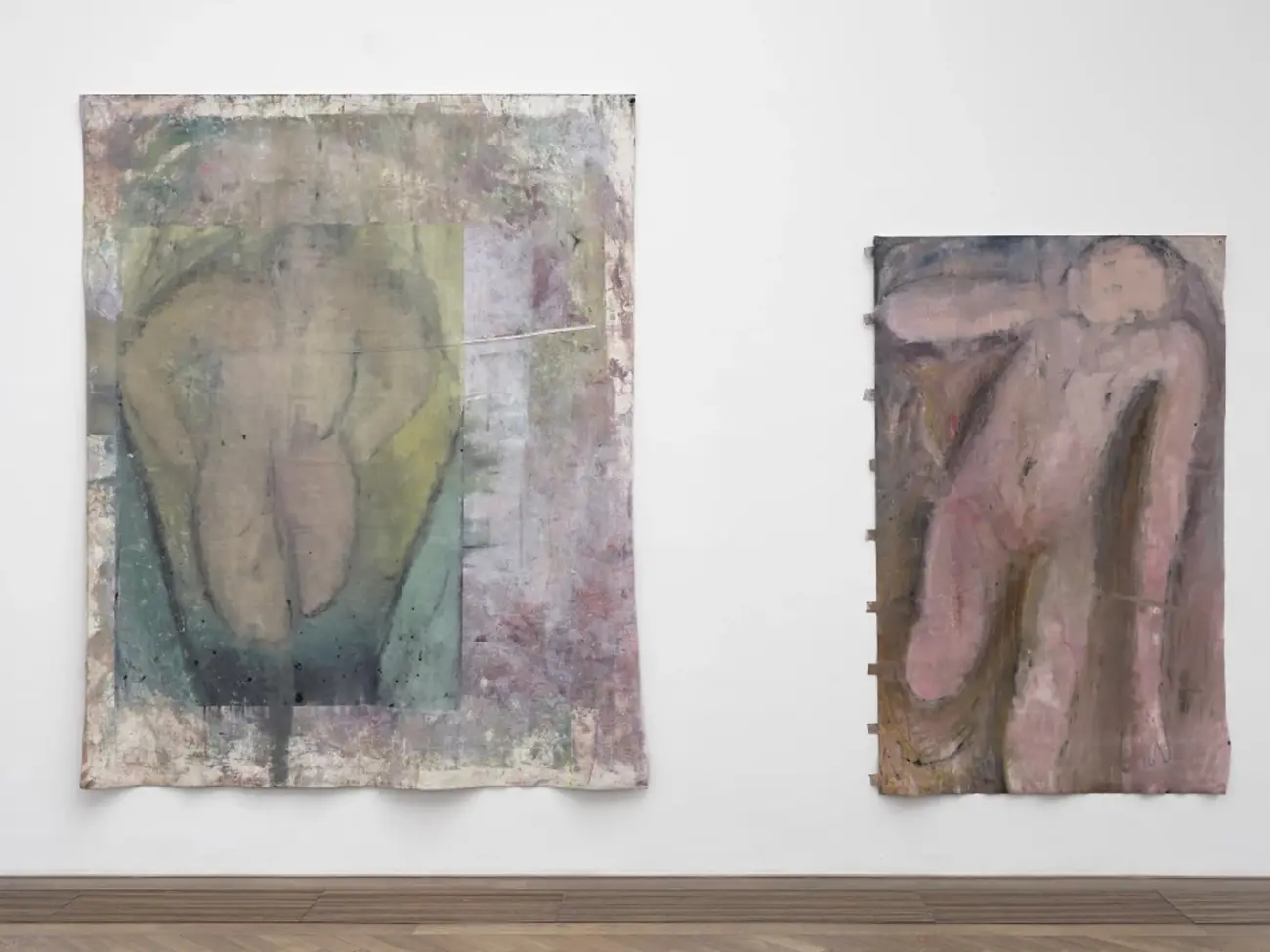

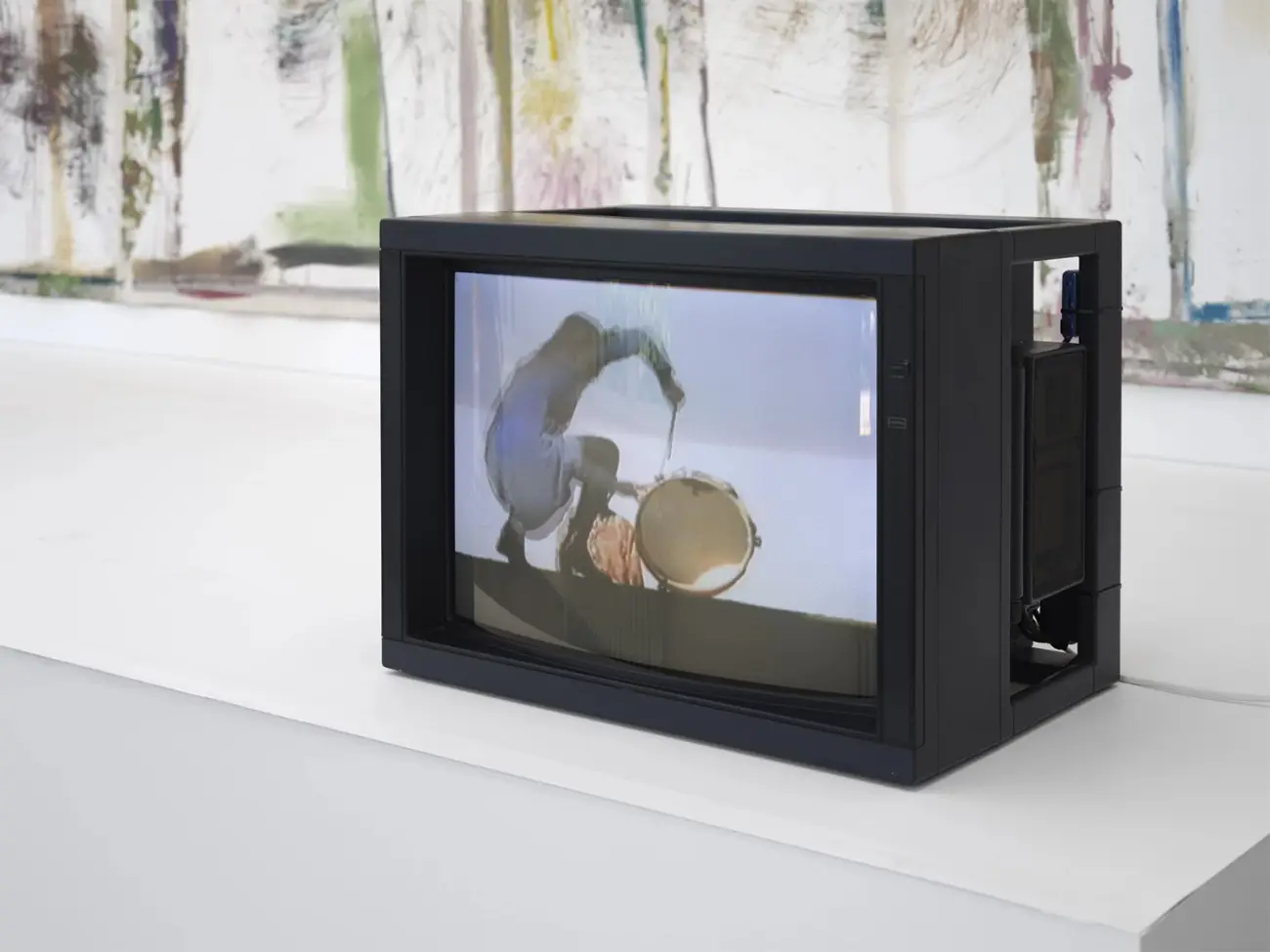
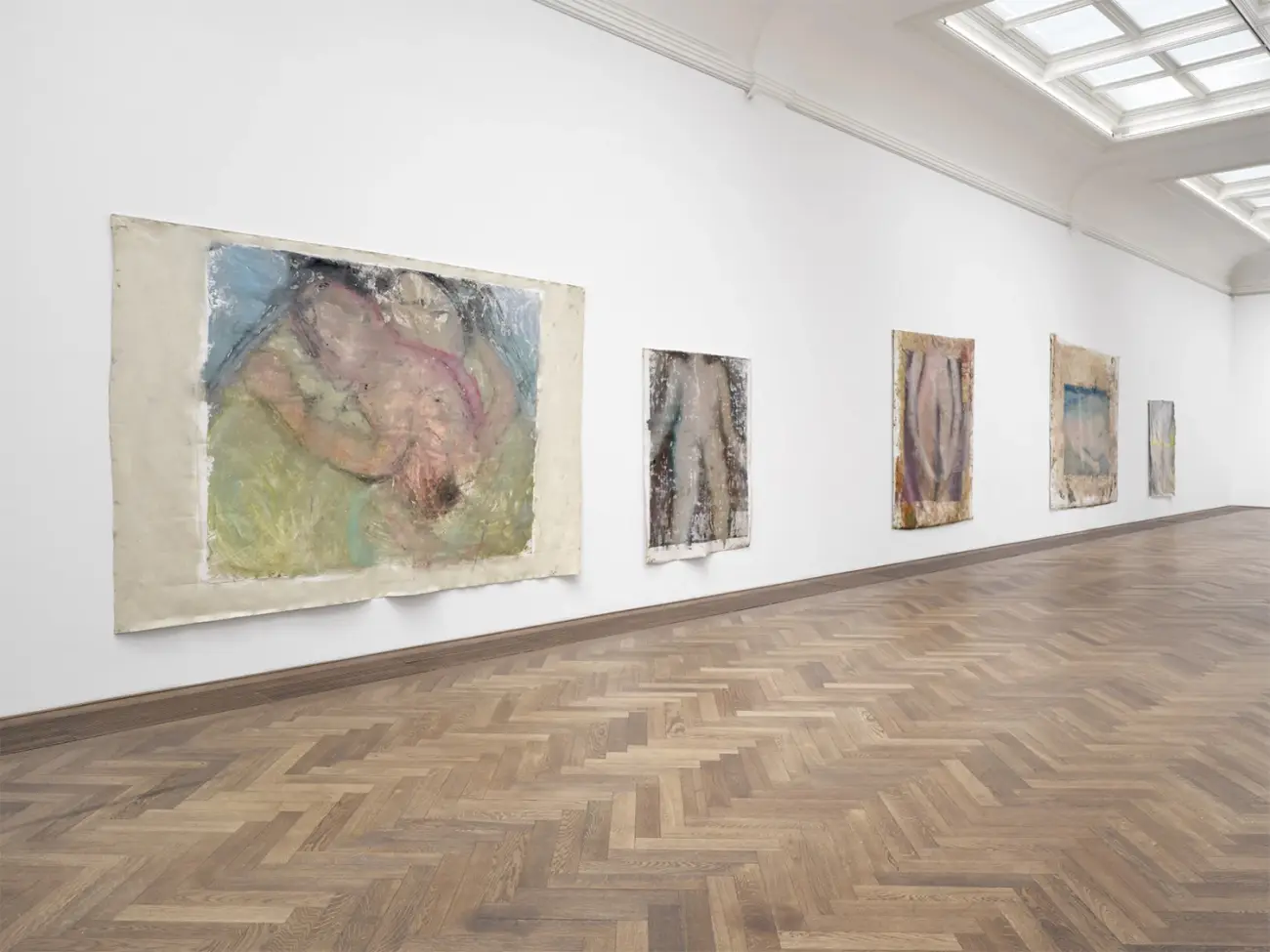
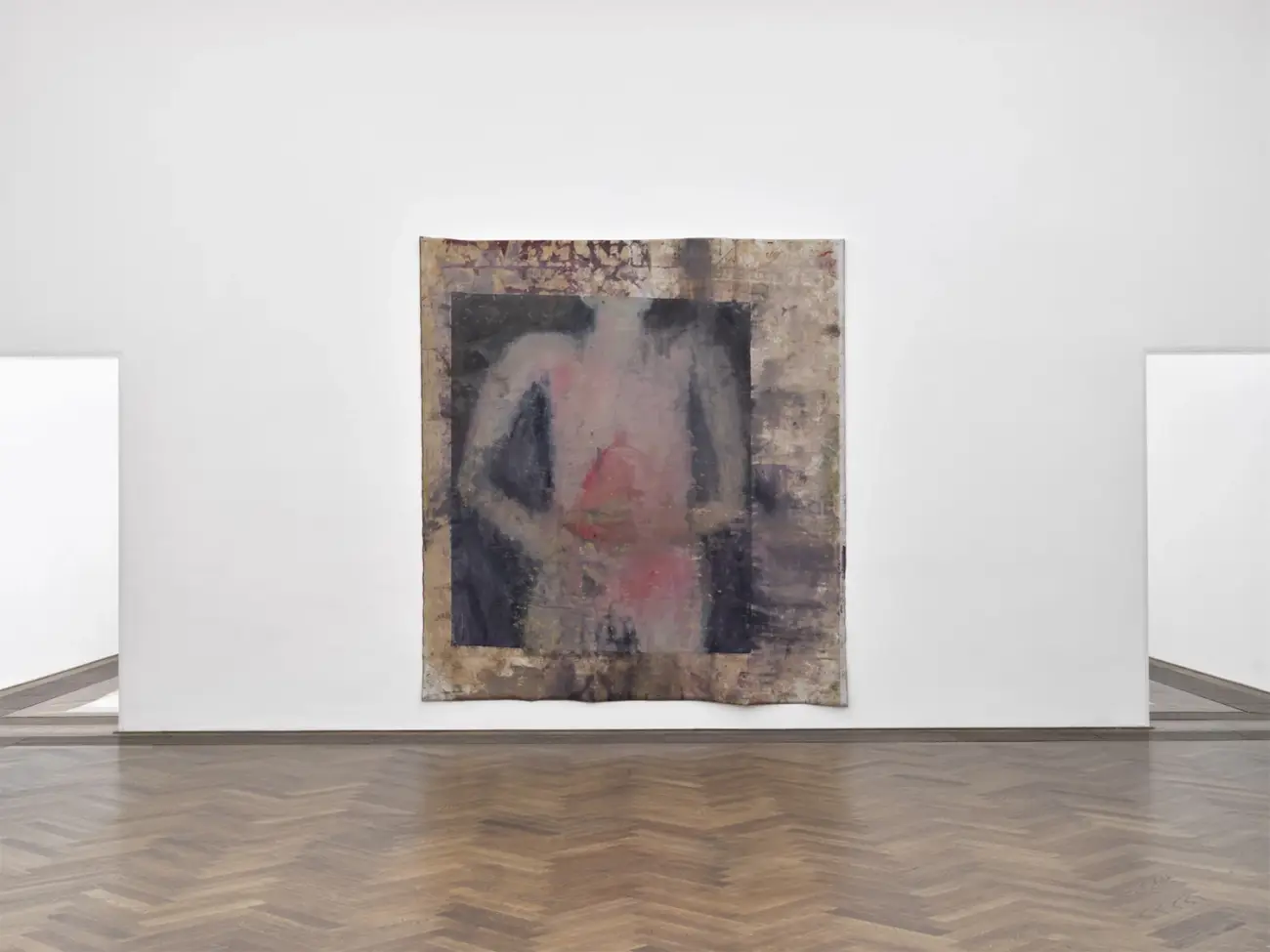
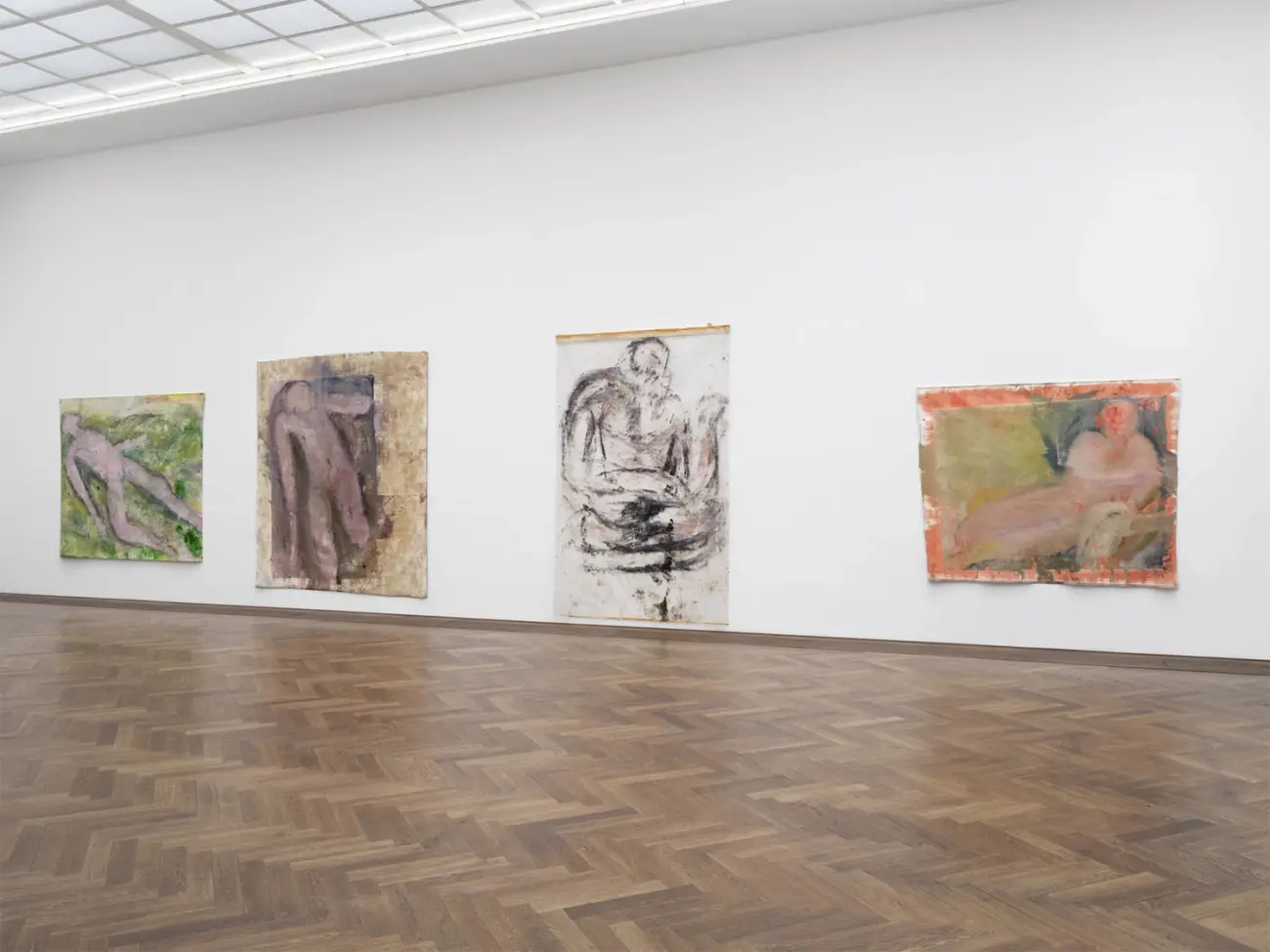
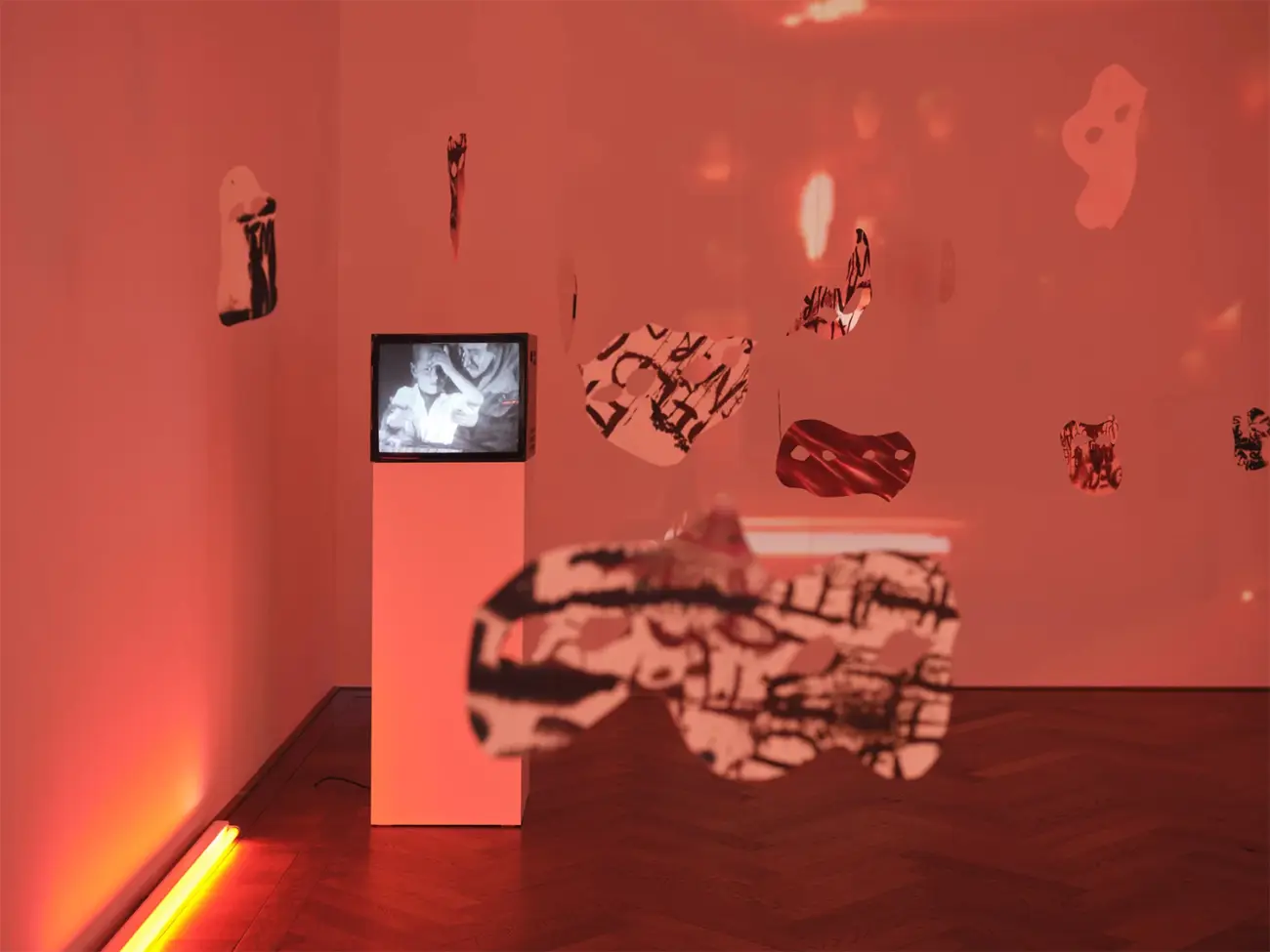
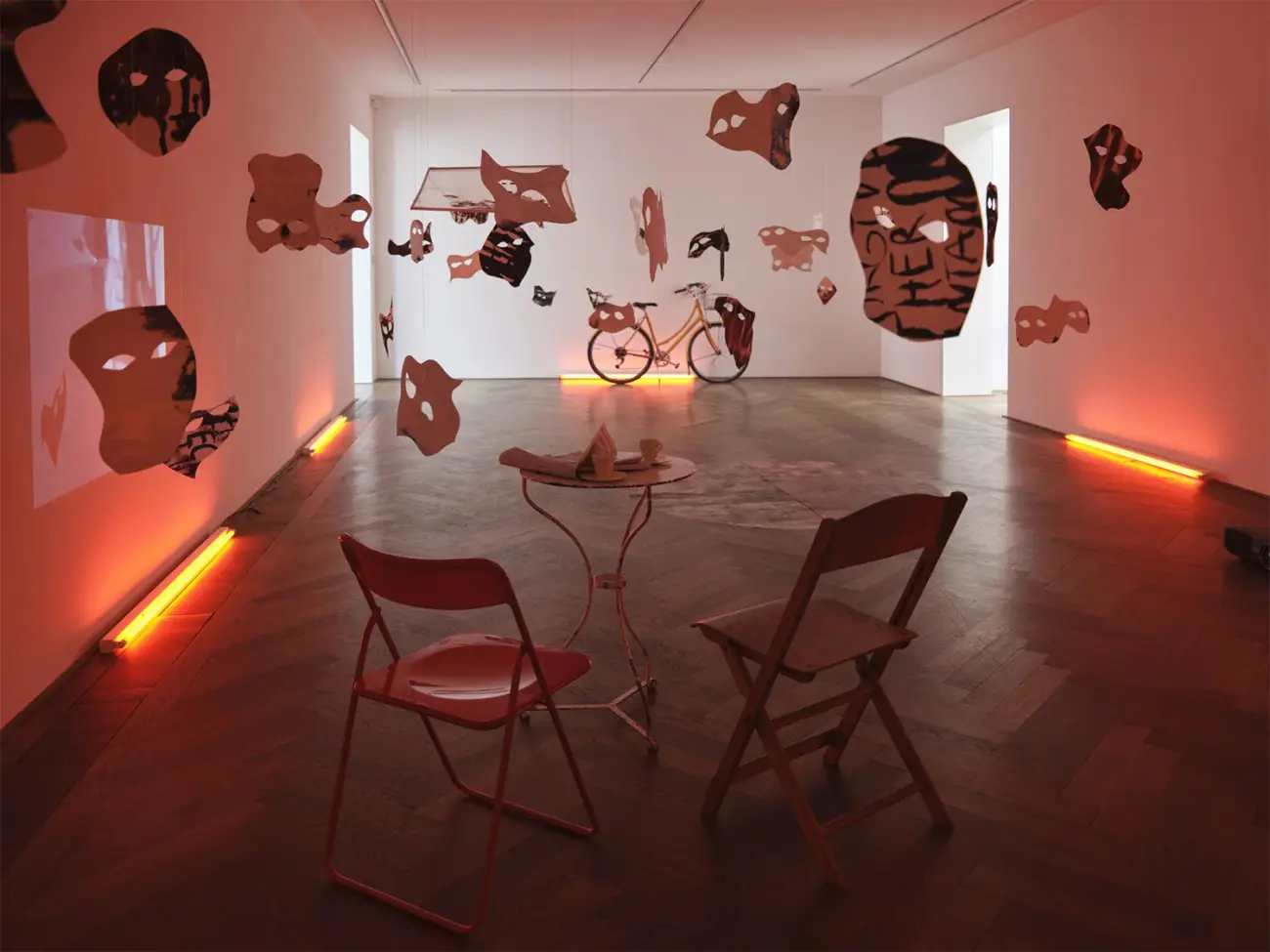
Ser Serpas: Of my life
13 June – 21 September 2025
In her exhibition, Of my life, artist Ser Serpas (b. 1995) unfolds a landscape of painting, performance, and poetry across five rooms and the foyer at Kunsthalle Basel. Her most extensive institutional solo exhibition in Switzerland to date forms a fragile dramaturgy of imprint, repetition, and disappearance, where images surface and dissolve, wavering on the edge of vanishing.
This sense of evanescence is embedded in the painting process itself; Serpas transfers images by placing two canvases on top of each other while the paint is still wet. This creates an imprint that captures the moment of contact between the two materials. The result is a series of double images that resemble prints, traces, memories, or remnants. Each pressed surface captures not only what was but also what is lost or transformed. Through this serial gesture, distortions, shadows, and shifts emerge, as the process of repetition introduces differences and alterations to the image.
Two rooms, the first and the last of the exhibition, present Serpas’ paintings. In these spaces, the unframed works are affixed directly to wooden panels, their surfaces bearing the imprint of transfer and time. Arriving at the final room, the echo of the first returns with uncanny familiarity. The near-symmetry unsettles, like stepping into a dream that loops back on itself: Have I been in this room already?
The exhibition is a space of expression—at times frozen in paint, at others repeated through the body. Embedded within, performances unfold. In three rooms and the entrance hall, Serpas reimagines during Art Basel week four historical stagings from the Margo Korableva Performance Theatre in Tbilisi. Performed in slow, looping sequences, these actions, such as hitting a ball, spinning a spoon, and kissing goodbye, are stripped of narrative and intention. What remains are gestures: isolated, familiar, and almost intimate.
Performance and painting here are not separate disciplines but two modalities of imprinting and vanishing. Serpas draws them together into a porous whole, where images emerge through contact and gestures detach from resolution. What unfolds is muddied terrain where the boundaries between movement and mark, representation and disappearance, merge.
Neither narrative nor sensation remains—what endures are the bodies and acts remembered and repeated, the memory of something barely held and fleeting.
Time seems to pass imperceptibly in a fleeting moment, and yet its traces remain. Its effect becomes visible in repetition: nothing repeats exactly, and no copy is ever identical. Every replication contains a difference, a subtle shift, a barely perceptible fracture.
Ser Serpas’ method follows this principle: after painting in multiple layers, she overlays a second canvas while the paint is still wet. She then presses and rolls the canvases together before pulling them apart. The result is a transfer from one surface to the other; not a mirror image, but an imprint shaped by subtle, unique differences that reveal the process behind it. When canvases of differing sizes are used, the transferred paint becomes not just an imprint of the original but a painterly framing of it. Paint oozes out at the edges or spills beyond the borders. Some canvases even bear footprints or other vestiges of the studio, revealing random yet meaningful evidence of a physical painting process where presence and absence are inextricably linked.
Perpetual Slippage
This strategy of replication by means of deviation continues throughout the exhibition Of my life at Kunsthalle Basel. At first glance, the paintings appear as a cohesive series, conventionally installed in the space. The viewer is confronted by fleshy and blurred larger-than-life figures that never fully materialize, defying a clear definition. The focus isn’t on portraiture but on what remains of it. These doubled images point not to likeness but to loss. Just as the image begins to take shape, it slips away again. Identity isn’t presented, it’s suggested as something that continually evades capture.
Serpas also employs a strategy of estrangement when selecting and processing her image sources. The bodies she depicts come from a digital archive generated by artificial intelligence. But the source material isn’t the focus; what matters is its transformation, what has been fragmented or enlarged.
Architectural Loops
As visitors move through all five rooms, the exhibition reveals itself as a loop, a circular arrangement. Some figures seem to repeat, but in fact, they are impressions directly resulting from the artist’s doubling technique. The paintings appear in two architecturally similar rooms that mirror each other. This spatial arrangement translates Serpas’ artistic principle into the exhibition layout itself. The setup brings the logic of imprinting into physical space and reinforces the key strategies of her painting. Thus, the exhibition space becomes more than a container; it’s an integral element of the painterly structure.
Unanchored Actions
Embedded within this are stage-like settings created by Serpas as sites for live performance. In close collaboration with the Margo Korableva Performance Theatre from Tbilisi, she reactivates their past performances as temporally displaced stagings rather than reenactments. Founded in 1994, the collective is known for its experimental, avant-garde productions that blur the lines between theater, performance, and other art forms. Under David Chikhladze’s direction, the group works with what they call “relativistic synthesis,” a practice involving deconstructing and recomposing existing forms. Video recordings of the original performances play on monitors at the very sites of their restaging in the gallery.
The actions of the six live performers—their circling gestures and tentative movements—seem to lack any specific goal or purpose, yet they leave visible traces: empty coffee cups or scattered beans. What also remain are gestures frozen in repetition, moving slowly, seemingly out of context. Alongside secondary image carriers, such as paint-smeared studio floors and walls, the exhibition space also features kitchen utensils, a film clip from Sergei Eisenstein’s Battleship Potemkin (1925), remnants of past rehearsals, masks, and found objects.
Serpas’ works challenge the way we see and replace recognition with experience. We’re never just looking at the image itself, but also at what it displaces, avoids, or withholds. Of my life is not simply an exhibition; it is an invitation to consider images not as fixed meanings, but as fragile, shifting bodies that are vulnerable, resistant, and open to change.